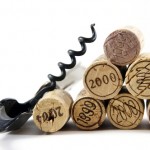By Glenn Stryker
Welcome to my occasional new column at Gaston Alive! which is modestly entitled “All about Wine”! And although these columns will be about wine, they won’t be recommendations for specific wines, but rather wine styles, varieties, regions and wineries. Now you may be thinking “ I want recommendations!”. Two reasons why you won’t get that here; first I sell wine for a living and do not want to influence you to buy a product that I may or may not sell. The other and more important reason; I want you to make your own choices based on what you like , rather than what I think of a wine. So with that out of the way, let’s talk about our first wine. Drum roll please….Sparkling Wine  (Champagne, Cava, Cremant, Prosecco, Spumante, Sekt, they are all synonymous).
(Champagne, Cava, Cremant, Prosecco, Spumante, Sekt, they are all synonymous).
 (Champagne, Cava, Cremant, Prosecco, Spumante, Sekt, they are all synonymous).
(Champagne, Cava, Cremant, Prosecco, Spumante, Sekt, they are all synonymous).Champagne and Sparkling wines are a category of wine typically from a blend of grapes such as Chardonnay, Pinot Noir and Pinot Meunier, but there are many more varieties from many different countries. A great description of what a good Champagne or Sparkling wine should offer was succinctly stated by Dom Perignon’s famous quote : “Come quickly, I am tasting stars !”
Where do those bubbles come from? The bubbles of sparkling wines are formed during a second fermentation process. For the second fermentation the winemaker takes still wine and adds a few grams of sugar and a few grams of yeast. This yeast and sugar convert to carbon dioxide (bubbles) and, of course alcohol. This conversion makes for millions of bubbles trapped in a very small space, sending the pressure soaring to about 80 psi in the typical bottle of sparkling wine. This second fermentation typically occurs in the actual bottle, but can also take place in the fermentation tank; it’s up to the winemaker’s preferred method.
What am I smelling and tasting? The aroma can be reminiscent of fresh applesauce, spiced apple, ripe pear and “fresh baked bread” smells, compliments of the yeast that’s added during the second fermentation. The flavors- apple, pear, citrus, strawberry, cream and vanilla (typically on the finish), yeast and nutty flavors are all common denominators in Sparkling wines and Champagnes
How can you tell if the wine is sweet or dry? On the label if it reads “Brut Nature” it is bone dry, ”Extra Brut” and ”Brut” are dry, “Extra Sec” is medium dry, “Demi Sec” is sweet and “Dolce” is very sweet.

What do I eat with these wines? Well salted foods are a natural pairing, everyone has probably heard of Caviar and Champagne. Most have never had caviar so here are my lists, Brie and Gouda, buttered popcorn (add some fresh rosemary in with the popcorn), potato chips, shrimp and shellfish, dried salami’s, sweet breads and mascarpone cheese, fruit based desserts, and shortbread cookies.
When do I drink these wines? Of course special occasions are what most people reserve these wines for, but I believe every day can be a special occasion!
Cheers,
Glenn Stryker
Questions? If you have questions or there is a wine topic you’d like to see explored, please email them to [email protected] with “Wine” in the subject line.
